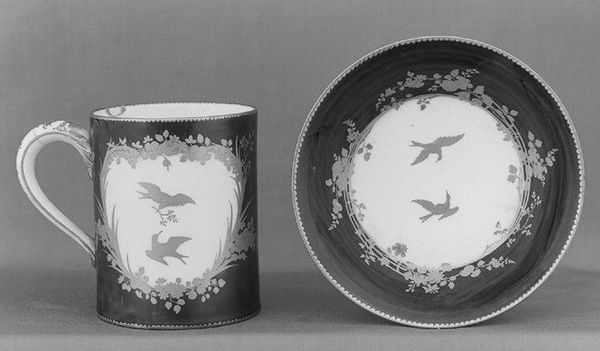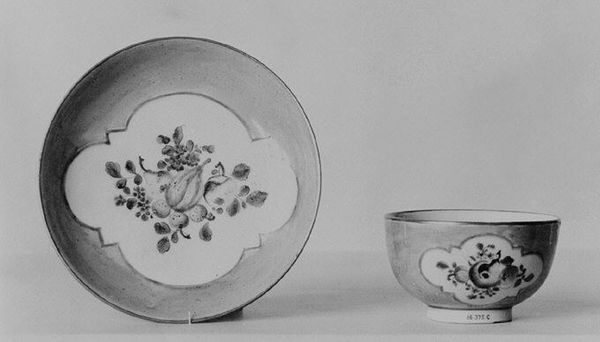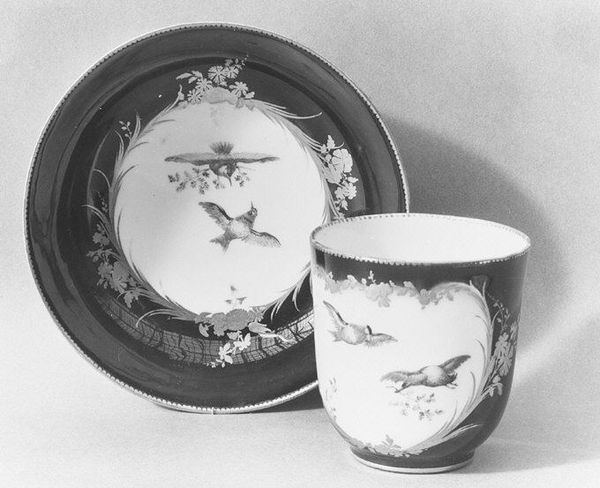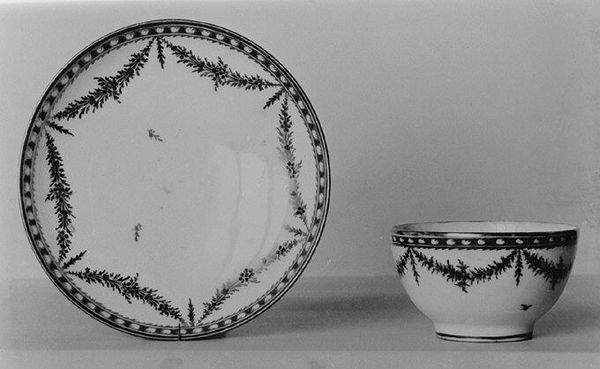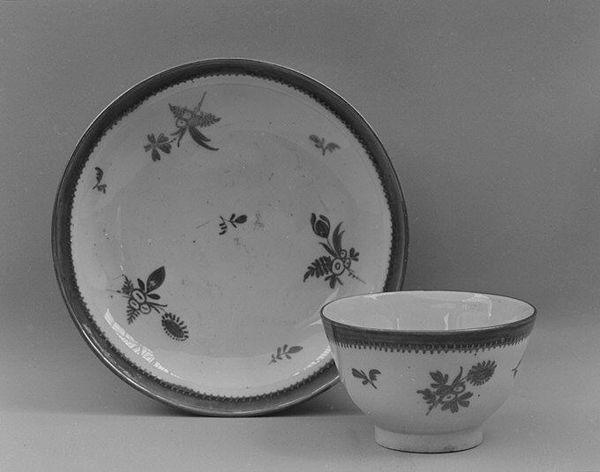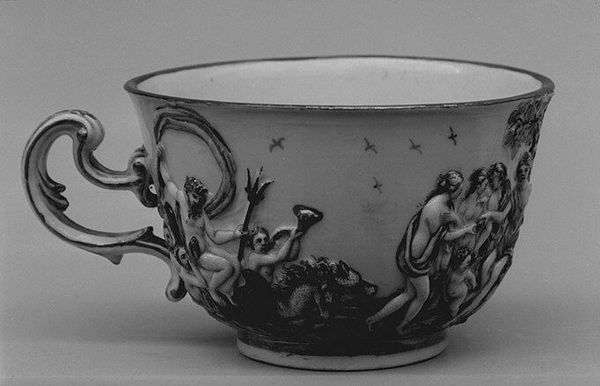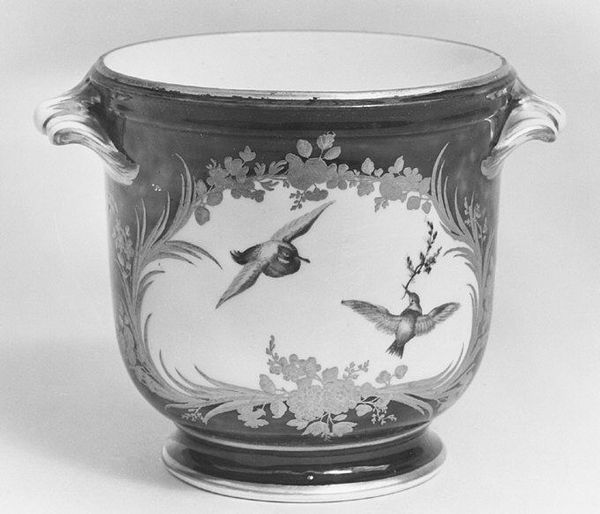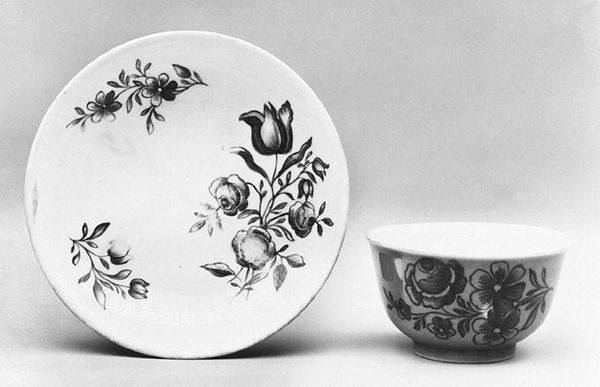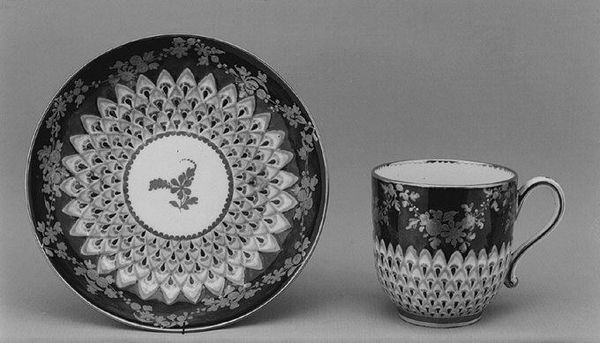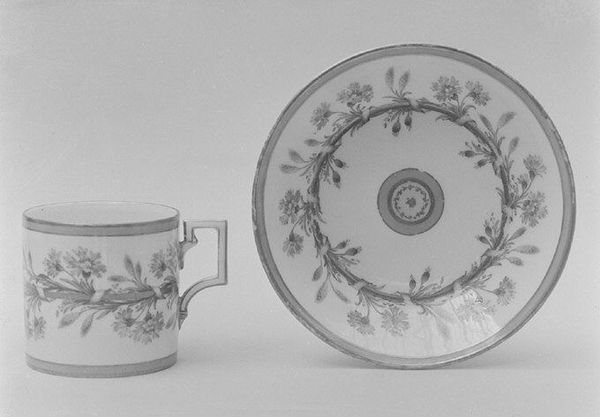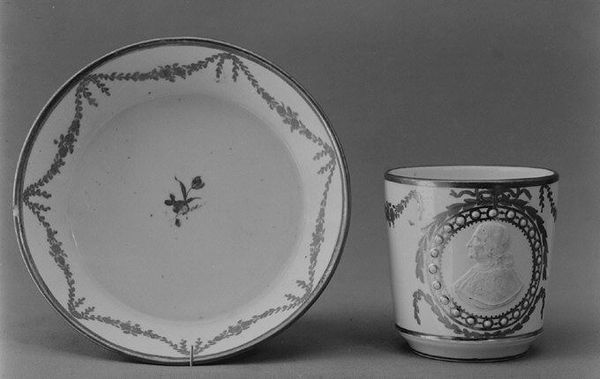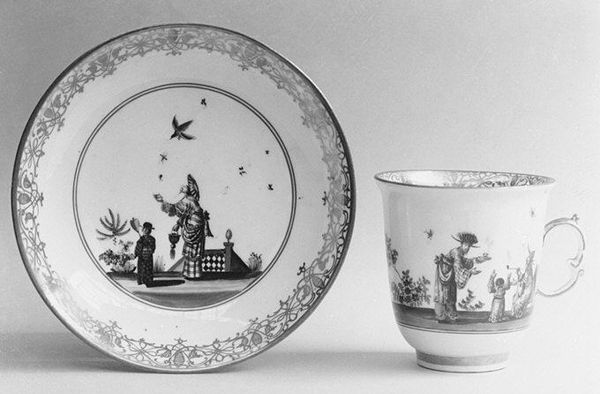
ceramic, porcelain
#
ceramic
#
bird
#
porcelain
#
ceramic
#
decorative-art
#
rococo
Dimensions: Height (cup .63): 2 3/4 in. (7 cm); Diameter (saucer .64): 5 1/4 in. (13.3 cm)
Copyright: Public Domain
Curator: Oh, isn't that delightful? It feels like something from a dream, so delicate! Editor: It is indeed. What we're looking at is a porcelain "Cup and Saucer" made around 1754 by the Vincennes Manufactory. These refined objects are currently housed at the Metropolitan Museum of Art in New York. Curator: 1754...just imagine the hands that shaped this! Those birds, frozen mid-flight. It's almost melancholic. Rococo with a hint of the ephemeral, don’t you think? Editor: Precisely. Rococo style heavily influenced the aesthetics and even the modes of production. Porcelain manufacturing itself, specifically soft-paste porcelain like this, demanded tremendous skill. And specialized labour to blend the materials of frit, clay, and then apply paint for decoration, then firing to create translucency and resonance in each form. Curator: The birds... Are they a common motif for this kind of ware? Editor: They appear quite frequently in Vincennes pieces, often interpreted as symbols of freedom or messengers of love. The factory was closely associated with the French court, reflecting a societal interest in ornithology as aristocratic pleasure and scientific exploration. Curator: Mmm, that checks. But thinking about it, the restricted palette is kind of... surprising. I imagined Rococo pieces bursting with all the colours they could get! What would they call that specific technique anyway? Editor: You are right, though often porcelain involved vibrant colors, this example shows camaieu decoration. These monochrome hues were valued, simulating cameos that further evoked neoclassical interests from buyers on top of showing artisans´ abilities through difficult single-firing runs and tonal consistency.. Curator: Knowing all the effort behind making these sorts of pieces gives me an odd sense of comfort. Editor: In seeing labor processes we appreciate that a small, perhaps personal, exchange of materials has generated cultural history. I suppose that's something to contemplate, right?
Comments
No comments
Be the first to comment and join the conversation on the ultimate creative platform.
